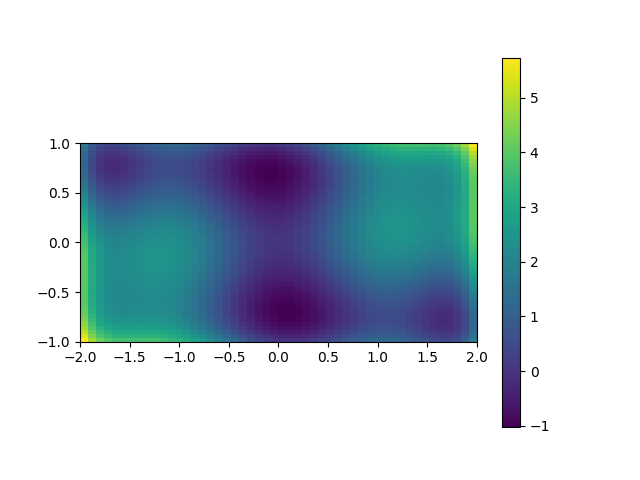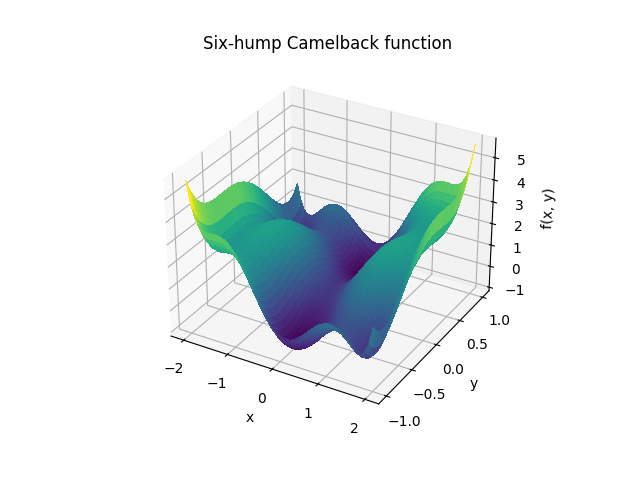Note
Go to the end to download the full example code.
1.5.12.15. Optimization of a two-parameter function¶
import numpy as np
# Define the function that we are interested in
def sixhump(x):
return (
(4 - 2.1 * x[0] ** 2 + x[0] ** 4 / 3) * x[0] ** 2
+ x[0] * x[1]
+ (-4 + 4 * x[1] ** 2) * x[1] ** 2
)
# Make a grid to evaluate the function (for plotting)
xlim = [-2, 2]
ylim = [-1, 1]
x = np.linspace(*xlim) # type: ignore[call-overload]
y = np.linspace(*ylim) # type: ignore[call-overload]
xg, yg = np.meshgrid(x, y)
A 2D image plot of the function¶
Simple visualization in 2D
import matplotlib.pyplot as plt
plt.figure()
plt.imshow(sixhump([xg, yg]), extent=xlim + ylim, origin="lower") # type: ignore[arg-type]
plt.colorbar()

<matplotlib.colorbar.Colorbar object at 0x7f3b2b823530>
A 3D surface plot of the function¶
from mpl_toolkits.mplot3d import Axes3D
fig = plt.figure()
ax: Axes3D = fig.add_subplot(111, projection="3d")
surf = ax.plot_surface(
xg,
yg,
sixhump([xg, yg]),
rstride=1,
cstride=1,
cmap="viridis",
linewidth=0,
antialiased=False,
)
ax.set_xlabel("x")
ax.set_ylabel("y")
ax.set_zlabel("f(x, y)")
ax.set_title("Six-hump Camelback function")

Text(0.5, 1.0, 'Six-hump Camelback function')
Find minima¶
import scipy as sp
# local minimization
res_local = sp.optimize.minimize(sixhump, x0=[0, 0])
# global minimization
res_global = sp.optimize.differential_evolution(sixhump, bounds=[xlim, ylim])
plt.figure()
# Show the function in 2D
plt.imshow(sixhump([xg, yg]), extent=xlim + ylim, origin="lower") # type: ignore[arg-type]
plt.colorbar()
# Mark the minima
plt.scatter(res_local.x[0], res_local.x[1], label="local minimizer")
plt.scatter(res_global.x[0], res_global.x[1], label="global minimizer")
plt.legend()
plt.show()

Total running time of the script: (0 minutes 0.398 seconds)